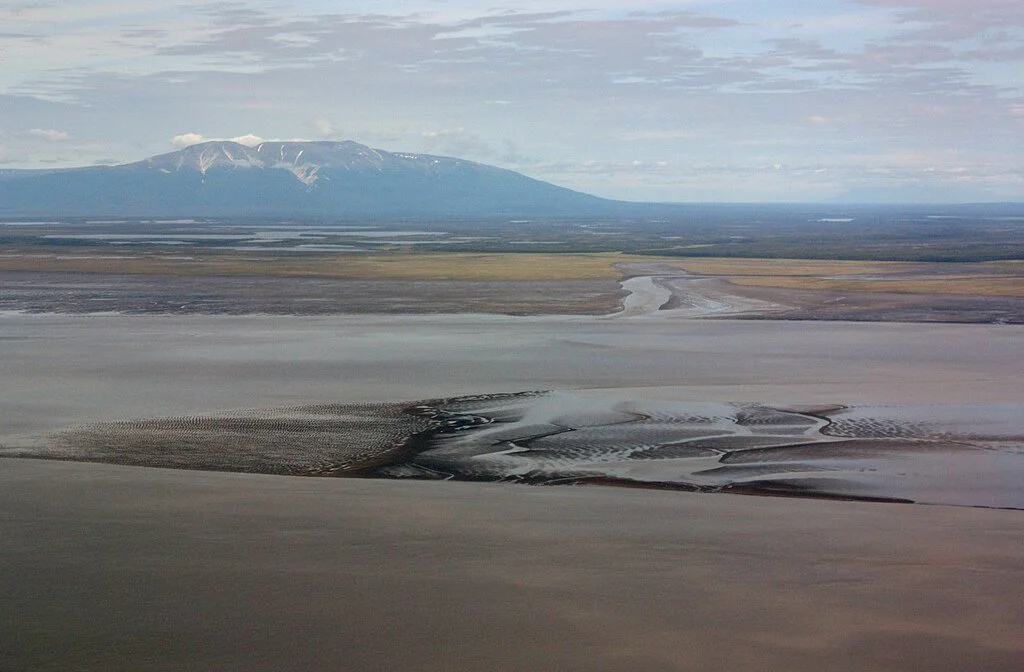Ensuring that Critically Endangered Beluga Whales Have the Food They Need
Photo of critically endangered Cook Inlet beluga whale by Madison Kosma
Catch us at the Board of Fish meeting this month as we support our Proposal 216. The Susitna River Delta is a calving ground for the Critically Endangered Cook Inlet beluga whales. The nearshore areas of Upper Cook Inlet are nursery grounds. Our proposal seeks to reduce the commercial smelt fishery from 200 tons to 100 tons so that belugas have the food they need to survive.
What is the problem we’re trying to solve?
We request that the board reduce the quota for smelt in the Cook Inlet commercial smelt fishery from 200 tons to 100 tons. Eulachon are a relatively short-lived, anadromous, species spending the bulk of their lives in the marine environment except for a spring spawning migration. Historical commercial harvests of eulachon in Upper Cook Inlet occurred in 1978, 1980, and 1998, with catches of 300, 4,000, and 18,900 pounds, respectively. In 1998, ADF&G recommended a somewhat arbitrary 50-ton (100,000-pound) harvest limit for the Upper Cook Inlet commercial smelt fishery, resulting in a 1999 commercial harvest of 50 tons. However, adoption of the Forage Fish Management Plan (5 AAC 39.212) closed commercial fishing for smelt in Upper Cook Inlet from 2000 to 2004 until the Cook Inlet Smelt Fishery Management Plan (5 AAC 21.505) was adopted. In 2005, the commercial fishery reopened with a 100-ton (200,000-pound) harvest cap with legal gear limited to a hand-operated dip net as defined in 5 AAC 39.105. The intent was to maintain that harvest cap until a general assessment of stock strength could be made.
Photo of Susitna River delta by Walter Siegmund
An assessment conducted by ADF&G in 2016 indirectly estimated eulachon escapement into the Susitna River by counting eulachon larvae moving downstream and extrapolating from the fecundity of adult eulachon migrating upstream (Willette and DeCino, ADF&G, unpublished data). This was intended to be the first of three study years, but future study years were cancelled. However, based on the 2016 study results, the Alaska Board of Fisheries increased the eulachon commercial harvest cap to 200 tons (400,000 pounds) in 2017. The 200-ton commercial harvest cap has been maintained since 2017 without further fishery-independent assessments in Upper Cook Inlet.
Fisheries management, including Alaska, has an extensive track record of overharvesting resources that were perceived as “so abundant that they could not be overfished.” Many stocks have subsequently collapsed. Climate change has altered previous ecosystem productivity patterns and linkages to amplify these collapses. Eulachon typically live 3-4 years and likely exhibit broad population swings based on spawning conditions, larval rearing conditions, and the marine environment. Eulachon population estimates in nearby waters of Lower Cook Inlet and the Northern Gulf of Alaska have declined dramatically in recent years. But no updated stock abundance estimates are available for Upper Cook Inlet eulachon populations.
The Forage Fish Management Plan recognizes the importance of forage fish, specifically including eulachon, as an ecosystem component critical to higher trophic level species, and previous BOF discussions raised concerns about the potential impact of eulachon harvest on the survival of endangered Cook Inlet beluga whales (CIBW). Endangered CIBW, a distinct population segment residing in Upper Cook Inlet, declined 2.3%/year from 2008 to 2019. After overwintering in Cook Inlet with minimal food resources, CIBW rebuild their energy reserves by feeding on eulachon in the spring, followed by king and coho salmon during the summer. But declines in king and coho salmon populations make spring eulachon even more important, particularly for pregnant and lactating females.
In the absence of a consistent time series of eulachon assessments, a reduction of the commercial eulachon harvest cap to 100 tons is warranted as a precAutionary approach to protect the eulachon population and for ecosystem considerations.
LEARN MORE ABOUT THE BOARD OF FISH PROCESS, LISTEN TO MEETING AUDIO, AND READ ALL COOK INLET PROPOSALS HERE
Thank you to the members who make this work possible! If you would like to support our work, become a member below.



